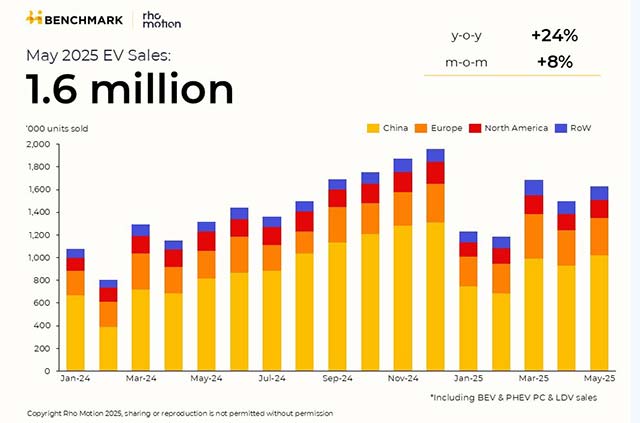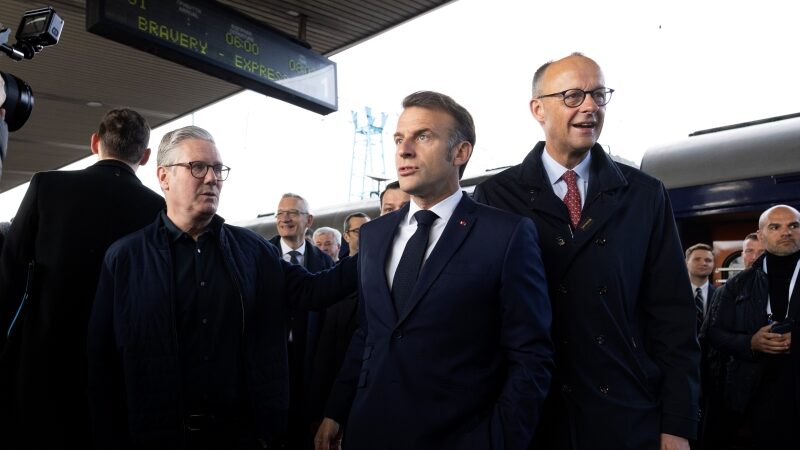Trump’s tariffs clear first inflationary hurdle
May’s inflation data was set to be the first real test of how consumer prices would be impacted by historically high tariffs. The post Trump’s tariffs clear first inflationary hurdle appeared first on FreightWaves.

Headline inflation was up a scant 0.1% month over month (m/m), below consensus expectations of a 0.2% m/m rise. On a yearly basis (y/y), the consumer price index rose 2.4% — very near the Federal Reserve’s ultimate target of 2% y/y price growth.
Core inflation, which removes items with volatile pricing like food and energy, was also up 0.1% m/m. In a Bloomberg survey of 73 economists, not one forecast a core reading as low as 0.1%.
Not-so-great expectations
What, in fact, did economists expect from this print?
In a note from June 5, Bank of America predicted that “tariffs should have a broader impact on the data” than in April, and expected “to see more signs of tariffs driving prices higher” in May.
Nor were they alone in this call.
Forecasts for tariff-driven price increases were practically unanimous: Economists surveyed by Reuters bet that a rise in core inflation “would be attributable to higher prices from President Donald Trump’s sweeping import duties,” and that “May would mark the start of tariff-related high inflation readings that could last through year-end.”
Indeed, low-cost retail behemoth Walmart shocked markets by announcing that it would begin raising prices in May, citing higher tariffs. “The magnitude and speed at which these prices are coming to us is somewhat unprecedented in history,” stated John David Rainey, chief financial officer at Walmart, in a mid-May interview.
While this move could be interpreted cynically as “greedflation,” in which companies hide behind an inflationary environment to justify price increases that aim to boost — rather than simply protect — margins, it is unlikely that Walmart’s price hike was so motivated. The retailer has gained market share in recent years specifically due to its status as a low-cost alternative to other big-box stores.
What was worrisome, however, was the potential cover that Walmart would give its competitors. “If Walmart is doing it, everybody else is probably going to be doing it — if not already, they will be in the future,” argued UBS economist Alan Detmeister.
May’s inflation data, then, was set to be the first real test of how consumer prices would be impacted by historically high tariffs.
“Retailers showed remarkable restraint in April,” said Stephen Stanley, chief U.S. economist at Santander U.S. Capital Markets, yesterday. “May should bring the leading edge of price increases, with the maximum impact coming in June and July.”
On June 3, Chicago Fed President Austan Goolsbee warned that April’s soft inflation reading would likely be the “last vestige” of pre-tariff price data and that the impact of tariffs “would start showing up very soon.”
He who hesitates is lost
Even though Goolsbee so confidently assumed that tariffs would have an inflationary impact — thus prompting the Fed to further delay additional interest-rate cuts — the Fed as a whole is not convinced.
Minneapolis Fed President Neel Kashkari revealed that there was a “healthy debate” among Fed officials about whether to “look through” the inflationary effect of these historic tariffs, treating any related price growth as a one-time shock and therefore prioritizing economic growth by cutting rates. This view is best represented by Fed Governor Christopher Waller, who reaffirmed a path to further rate cuts in 2025 earlier this month.
Others, like Goolsbee and Kashkari, are less convinced that tariffs will only have a transitory influence on consumer prices. This camp is thus more comfortable maintaining the current “wait-and-see” approach to quantitative easing, citing the surprisingly strong labor market as justification for withholding cuts.
But there is a third alternative, albeit one that is somewhat of a dark horse in influencing future policy.
This group argues that the Fed’s response, far from raising rates to combat tariff-induced inflation or even looking through the tariffs and not adjusting current policy, should in fact be expansionary.
This third view, outlined in Javier Bianchi and Louphou Coulibaly’s working paper, “The Optimal Monetary Policy Response to Tariffs,” concedes that tariffs will lead to a substantial price increase.
The issue, however, is that consumers will fail to realise that tariffs generate revenue for the government, which (all else being equal) raises household income. Equipped with a higher income, households could largely shrug off higher prices.


















































































































































